"It will always be possible to make a better pen." ~ The History of the Parker Pen Company
The Transition from Feather to Fountain
After more than ten thousand years of feather-driven script, the first pens that held their own ink supply were invented. The earliest surviving examples of fountain pens date from the start of the eighteenth century. The exact origins of the first fountain pen remain unclear and although the French royal instrument maker, Nicholas Bion (1652-1733) makes reference to them in a treatise written by him in 1709, he was neither the inventor nor the patent holder for them. These early prototypes still made use of a quill nib until gold tipped nibs became more popular. Whilst it was beneficial for the writer to be spared from constantly having to dip the nib for ink, the first models were dogged with design flaws which invariably led to the ink leaking from the reserve. Early patents were issued to Baltimore shoemaker, Peregrin Williamson in 1809 followed by John Scheffer in Britain in 1819. The first self-filling fountain pen was patented in 1813 by John Jacob Parker in 1813. The fountain pen design flaws were finally addressed and resolved by Lewis Waterman in 1884 when he modified the design to include three grooves within the feed mechanism as well as an air hole in the nib. Waterman’s journey to successfully patenting the design for the first modern fountain pen was born out of frustration at the inadequacies of the pens available at the time. Waterman was a salesman and lost a valuable new customer when a sales contract was ruined by a leaking fountain pen
held their own ink supply were invented. The earliest surviving examples of fountain pens date from the start of the eighteenth century. The exact origins of the first fountain pen remain unclear and although the French royal instrument maker, Nicholas Bion (1652-1733) makes reference to them in a treatise written by him in 1709, he was neither the inventor nor the patent holder for them. These early prototypes still made use of a quill nib until gold tipped nibs became more popular. Whilst it was beneficial for the writer to be spared from constantly having to dip the nib for ink, the first models were dogged with design flaws which invariably led to the ink leaking from the reserve. Early patents were issued to Baltimore shoemaker, Peregrin Williamson in 1809 followed by John Scheffer in Britain in 1819. The first self-filling fountain pen was patented in 1813 by John Jacob Parker in 1813. The fountain pen design flaws were finally addressed and resolved by Lewis Waterman in 1884 when he modified the design to include three grooves within the feed mechanism as well as an air hole in the nib. Waterman’s journey to successfully patenting the design for the first modern fountain pen was born out of frustration at the inadequacies of the pens available at the time. Waterman was a salesman and lost a valuable new customer when a sales contract was ruined by a leaking fountain pen
George Safford Parker

The founder of the Parker Pen Company, a contemporary of Lewis Waterman experienced the same frustrations. He was a telegraphy teacher and like Waterman his entrance into the pen market came from the desire to find a pen that was fit for its purpose. In addition to teaching telegraphy, George Safford Parker sold pens on behalf of the John Holland Pen Company. As a natural and gifted salesman, Parker agreed to make any necessary repairs to pens that he had sold and he was soon astounded at the sheer volume requiring his services. In addition to learning a great deal about pen manufacturing, Parker soon realised that a better pen design was needed and in 1888 he established the Parker Pen Company in Janesville,Wisconsin. Within a year, George Safford Parker had manufactured his first pen and by 1891 he had secured $1000 of investment from W F Palmer to successfully launch his business.
Early Parker Innovations
In 1894, George Parker had his first big success in innovation with the creation of the Lucky Curve ink feeding system. This product proved to be the key to Parker’s success in an emerging market of many new companies and pens. Using capillary action, the Lucky Curve ink feeding system drained ink back into the reservoir within the pen when it was upright. This resulted in fewer ink spills for the user and the system continued to be used in Parker pens until the late 1920s.
By the turn of the century, two further innovations brought success to the Parker Pen Company with the introduction of an outer cap that slipped onto the pen as well as a ‘jointless’ pen which was another invention aimed at lessening the leaking ink factor that dogged so many pen users. The Parker Jointless pen had succeeded in combating leaks at the screwed joint found in most pens of the time, as the nib fitted much like a cork in a bottle. The potential for mess when filling the fountain pen was also an issue that Parker sought to address with the development of a ‘button filler’ in the first decade of the 20th century. Prior to this time, a fountain pen would be refilled with ink using an eyedropper which would be dispensed directly into the barrel of the pen. The button filler disposed of the need for a separate filling device as the barrel of the pen contained an ink sac. The user simply had to remove a small cap from the end of the pen and place the nib directly into the ink bottle. When the button under the small cap was depressed and released, ink would be drawn into the ink sac concealed within the barrel. This innovation was highly successful and led to many variations manufactured by contemporaries of Parker.
lessening the leaking ink factor that dogged so many pen users. The Parker Jointless pen had succeeded in combating leaks at the screwed joint found in most pens of the time, as the nib fitted much like a cork in a bottle. The potential for mess when filling the fountain pen was also an issue that Parker sought to address with the development of a ‘button filler’ in the first decade of the 20th century. Prior to this time, a fountain pen would be refilled with ink using an eyedropper which would be dispensed directly into the barrel of the pen. The button filler disposed of the need for a separate filling device as the barrel of the pen contained an ink sac. The user simply had to remove a small cap from the end of the pen and place the nib directly into the ink bottle. When the button under the small cap was depressed and released, ink would be drawn into the ink sac concealed within the barrel. This innovation was highly successful and led to many variations manufactured by contemporaries of Parker.
Not satisfied with just reducing ink leakage from the pen, the Parker Company turned to the nature of the ink itself to improve its drying time on the paper thus eliminating the need for blotting. Quink Ink was launched in 1931 after a 3 year
and $68,000 research investment. Whilst the ink did eradicate the need for blotting, it was also strongly alkaline which caused corrosion in some pens, ultimately leading to the invention of Parker’s most successful fountain pen, The Parker 51, in 1941 which was made from Lucite rather than Permanite.
The Key Parker Models
 In addition to innovations in pen components and technology, the Parker Pen Company earned a reputation for designing high quality and stylish pens that appealed to the discerning pen user. This reputation ensured that Parker Pens remained as one of the top two companies for sales of writing instruments worldwide between the 1920s and 1960s. Parker invented and released countless models during this time with the three most famous and successful being the Duofold, Parker 51 and the Parker 45
In addition to innovations in pen components and technology, the Parker Pen Company earned a reputation for designing high quality and stylish pens that appealed to the discerning pen user. This reputation ensured that Parker Pens remained as one of the top two companies for sales of writing instruments worldwide between the 1920s and 1960s. Parker invented and released countless models during this time with the three most famous and successful being the Duofold, Parker 51 and the Parker 45
1921 – Parker Duofold
The launch of the Parker Duofold was the largest and most significant so far in the Parker Company’s thirty year history. It was nicknamed the ‘Big Red’ and epitomised the roaring twenties and it had a $7 price tag (equivalent to $90 today) which also made it the most expensive fountain pen on the market. The Duofold also came with a 25 year guarantee. In 1923, the Duofold pencil and Lady Duofold were introduced and within four years of its launch the Duofold had helped to quadruple company sales.
By 1926 a new durable form of plastic, known as Permanite, was available and the Duofold (previously made from vulcanised rubber) was re-launched. The durability of the new pens was highlighted with outrageous stunts including drops made from airplanes and drops into the Grand Canyon. The Duofold is still manufactured by Parker and has seen many limited editions celebrating occasions such as the centenary of the company in 1988 and the Queen’s Golden Jubilee in 2002
1941 – Parker 51
The Parker 51 earned its name as it was created 51 years after the launch of the Parker Pen Company. It earned a number of design awards for its cigar shape and hooded nib and was the result of a $250,000 research investment by the company. In its thirty years of manufacture the Parker 51 made more than $400 million of sales making it the most widely used fountain pen in history. It was made from Lucite rather than Permanite which was resistant to the corrosion caused by the alkali nature of many new inks such as Quink and later Superchrome ink. A cheaper version of the 51, known as the Parker 21 was introduced in 1948 and this quickly earned more than 60% of the over $5 market for the Parker Company.
made from Lucite rather than Permanite which was resistant to the corrosion caused by the alkali nature of many new inks such as Quink and later Superchrome ink. A cheaper version of the 51, known as the Parker 21 was introduced in 1948 and this quickly earned more than 60% of the over $5 market for the Parker Company.
1960 – Parker 45
Four years after Parker released the Parker 61 which was the first self-filling fountain pen, the Parker 45 was launched. The unique feature of the Parker 45, named after the famous pistol, was its use of an ink cartridge. The design was based on a pen previously made by the Eversharp Company whom Parker had acquired in 1957, as an attempt to expand into the lower end of the ball point pen market. The Parker 45 was not intended as an expensive model and was marketed as a school pen, appealing to children who would like the novelty and parents who would appreciate the reduced risk of messy ink spills
based on a pen previously made by the Eversharp Company whom Parker had acquired in 1957, as an attempt to expand into the lower end of the ball point pen market. The Parker 45 was not intended as an expensive model and was marketed as a school pen, appealing to children who would like the novelty and parents who would appreciate the reduced risk of messy ink spills
Parker Pens and the History Books
The success of the Parker Pen Company is not only evident in its innovations but in the endorsements from discerning and distinguished writers. Within the first thirty years of the company, Parker pens were the chosen writing instrument for Puccini’s La Boeheme in 1896, Arthur Conan Doyle’s later Sherlock Holmes works in the first two decades of the 20th century as well as George Bernard Shaw’s play, Pygmalion in 1912. George Safford Parker was also able to adapt his product range to the changing times and needs of consumers. This was seen in the commercial success of the ‘Trench’ pen which was invented in 1916 to address the needs of soldiers fighting during the First World War. Small pellets of black pigment were stored in the pen’s barrel and when these were mixed with water in the pen’s cap, ensured that soldiers had sufficient ink supply whilst in the trenches. A contract was awarded to the Parker Pen Company by the U.S. War department for sale of the trench pen to soldiers in Europe and this secured financial stability for the company during the austerity of the wartime period. The decade following the end of the First World War saw the United States enter the Great Depression with many businesses facing financial ruin. Unlike many of its rivals, the Parker Pen Company chose not to devalue its most successful pen models which had experienced success at the high end of the market. In an additional response to the challenges of the depression, Parker began production of an economic model especially for school students in 1932. These pens received no advertising or marketing and were not even given a name by the company. They are known by collectors today as Thrift Time or Depression pens and are another example of the adaptability of the Parker business philosophy. During the Second World War, many large manufacturing premises were used as part of the war effort and the Parker Pen Company in Wisconsin was no exception. Parker saw the shortage of materials for the vital components of their bestselling pen of the time, the Parker 51, as yet another marketing opportunity and the advertisements of the time urged customers to prepare for a shortage; “ ’We must state that there will not be enough “51’s” to go around this year. Government orders have curtailed all pen production.’ Nevertheless, Parker suggested that if you needed a new pen for ‘wartime work,’ such as ‘writing letters of encouragement to some spunky lad in the armed services,’ then you should trot right down to your dealer and reserve a “51”.’ i This marketing ploy paid high dividends with many consumers waiting avidly for their $12.50 Parker 51 to become available once the war had ended. By the end of its production in 1972, the Parker 51 had yielded more than $400 million for the company. The ending of the Second World War was also significant for the Parker Pen Company with General Dwight D Eisenhower using his Parker 51 to sign the armistice signalling the end of the European front in 1945. Later the same year, General Douglas MacArthur signed his name to the Japanese surrender document on the deck of the USS Missouri with his 20 year old Parker Duofold. Following the end of the Second World War and the Cold War era, the United States and the Soviet Union began a new rivalry in the space race. The Parker Pen Company again enjoyed a prominent position in a number of the landmark moments in this period of history. In 1972, President Nixon gave two titanium Parker 75 pens to the President of the People’s Republic of China. These
soldiers in Europe and this secured financial stability for the company during the austerity of the wartime period. The decade following the end of the First World War saw the United States enter the Great Depression with many businesses facing financial ruin. Unlike many of its rivals, the Parker Pen Company chose not to devalue its most successful pen models which had experienced success at the high end of the market. In an additional response to the challenges of the depression, Parker began production of an economic model especially for school students in 1932. These pens received no advertising or marketing and were not even given a name by the company. They are known by collectors today as Thrift Time or Depression pens and are another example of the adaptability of the Parker business philosophy. During the Second World War, many large manufacturing premises were used as part of the war effort and the Parker Pen Company in Wisconsin was no exception. Parker saw the shortage of materials for the vital components of their bestselling pen of the time, the Parker 51, as yet another marketing opportunity and the advertisements of the time urged customers to prepare for a shortage; “ ’We must state that there will not be enough “51’s” to go around this year. Government orders have curtailed all pen production.’ Nevertheless, Parker suggested that if you needed a new pen for ‘wartime work,’ such as ‘writing letters of encouragement to some spunky lad in the armed services,’ then you should trot right down to your dealer and reserve a “51”.’ i This marketing ploy paid high dividends with many consumers waiting avidly for their $12.50 Parker 51 to become available once the war had ended. By the end of its production in 1972, the Parker 51 had yielded more than $400 million for the company. The ending of the Second World War was also significant for the Parker Pen Company with General Dwight D Eisenhower using his Parker 51 to sign the armistice signalling the end of the European front in 1945. Later the same year, General Douglas MacArthur signed his name to the Japanese surrender document on the deck of the USS Missouri with his 20 year old Parker Duofold. Following the end of the Second World War and the Cold War era, the United States and the Soviet Union began a new rivalry in the space race. The Parker Pen Company again enjoyed a prominent position in a number of the landmark moments in this period of history. In 1972, President Nixon gave two titanium Parker 75 pens to the President of the People’s Republic of China. These contained traces of lunar dust that had been brought back by the astronauts of the Apollo mission. During the NASA Discovery Shuttle Mission in November 1984, a number of engraved Parker Classic pens were taken into space and these were later given as commemorative gifts. The following year, President Ronald Regan presented the President of the Soviet Union, Mikhail Gorbachev with a Parker Premier desk set as a commemoration of the 10th anniversary of the Apollo –Soyuz Space Mission. The prominence of the Parker Pen name was not only seen in the United States and in 1962 a Royal Warrant was awarded to the company by the British Royal Household indicating Parker as their only supplier of pens and inks. This close relationship continued with Parker celebrating Queen Elizabeth’s Golden Jubilee in 2002 with the release of two commemorative pens. The first was a 23 carat gold plated Duofold pen, engraved with an extract from the Proclamation of the Accession. Parker produced 2500 of these pens with the first one presented to the Queen herself. In the same year, Parker also produced a special design of the Sonnet pen in a royal purple finish with a 23 carat gold plated cap and commemorative text engraving.
contained traces of lunar dust that had been brought back by the astronauts of the Apollo mission. During the NASA Discovery Shuttle Mission in November 1984, a number of engraved Parker Classic pens were taken into space and these were later given as commemorative gifts. The following year, President Ronald Regan presented the President of the Soviet Union, Mikhail Gorbachev with a Parker Premier desk set as a commemoration of the 10th anniversary of the Apollo –Soyuz Space Mission. The prominence of the Parker Pen name was not only seen in the United States and in 1962 a Royal Warrant was awarded to the company by the British Royal Household indicating Parker as their only supplier of pens and inks. This close relationship continued with Parker celebrating Queen Elizabeth’s Golden Jubilee in 2002 with the release of two commemorative pens. The first was a 23 carat gold plated Duofold pen, engraved with an extract from the Proclamation of the Accession. Parker produced 2500 of these pens with the first one presented to the Queen herself. In the same year, Parker also produced a special design of the Sonnet pen in a royal purple finish with a 23 carat gold plated cap and commemorative text engraving.
Parker and the Ball Point Pen
The Parker Pen Company began research into ball point pens in the 1940s but saw the failures of many of the earliest models made by other companies on the market and waited until it was able to produce a pen that was robust enough to merit the Parker name. In 1950, Parker produced the Hopalong Cassidy Ball Point Pen. It was a novelty 98c ball pen, but the company memo made it clear to the sales team that whilst it was a ball point pen made by the Parker Pen Company, it was not a Parker ball point pen. It seems that Parker wanted to test the water with this product without risking the Parker name if it was not a success. Parker recognised the Hopalong as a pen in equal standing to the other ball points available on the market at this time, but did not consider it worthy of the Parker name. Prior to this time, Parker made it clear that they were not in the business of making ball point pens at all. Kenneth Parker responded to a Time Magazine article in June 1946; “Parker… doesn’t have a ball point in its stable of products because it doesn’t want one…. If and when we bring out a ball point it won’t resemble anything now on the market.” ii The ball point market boom of 1946 was in strong decline through to 1950 when a slow recovery began, starting with the improved quality pens of the Papermate Company in 1951. Sales of ball points had risen from virtually nothing in 1950 to $40 million in 1953 and $48 million by the start of 1954. The unit sales figures for this time frame show the rise more dramatically with 50 million pens sold in 1951 and 150 million by 1954. By 1953, sales of ball point pens were finally overtaking sales of fountain pens and the shaky start of companies such as Reynolds were a distant memory. By the autumn of 1953, the Parker Pen Company was ready to begin its contribution to the ball point market and launched Operation Scramble, an attempt to put the Jotter pen into production in just ninety days. The features of the Jotter pen which sold for $2.75 included non-smearing, fast-drying ink that was acid neutral and so would not cause damage to the nib unlike some fountain pens. It had a smooth ball bearing tip with a stainless steel cap and nylon barrel, available in a range of colours. The pen could be purchased with red, green, blue or black ink in addition to having a variety of point sizes to suit individual writing preferences. Most pen refills at the time held 0.5g of ink whereas the Jotter held 1.6g equating to an extra 393,000 words or forty five to seventy hours of writing. Despite all of these technological and stylistic advances, the Parker Company were still nervous about the Jotter, aware of the damage that a poor quality pen could have on a company, such as Eversharp had experienced in 1946. Kenneth Parker opted not to include the famous Arrow sign on the Jotter, believing that it failed to be a commercial success, it would not be obvious that it was a Parker pen. The first recipients of the Jotter were the company’s 1600 employees in January of 1954. The original selling price was listed at $2.75 ($23.50 today) but demand led to an increase of 20 cents by March 1954. The following month, 100,000 pens were shipped to New York and by June 1954, the first Jotter pens were sold in Europe. Parker estimated that by the end of 1954 it would sell 4.5 million Jotters. Further design features were evident in the launch of the T Ball Jotter in 1957 which included a sintered ball comprised of 5 million metal particles in a one millimetre ball. This tiny ball could hold 167 times more ink than its predecessors and was able to cut glass with a compressive strength of half a million pounds per square inch. The T Ball Jotter’s introductory price was just $1.95 and within six months of its launch, five million pens had been manufactured. By 1984 more than 400 million T Ball Jotters had been sold. In 2013, the Parker Pen Company celebrates its 125th anniversary with pens currently sold in more than 120 countries. Its ownership transferred to Gillette for $450 million in 1993 and then in 2000 to the Newell Rubbermaid Company where it currently trades under their stationery division, Sanford which is based in Chicago, Illinois. The Sanford portfolio is the largest in the stationery market and includes brands such as Papermate, Sharpie, Waterman and Reynolds. The key to the success of the Parker Pen Company can be attributed to many factors including its innovation and determination to remain loyal to producing quality products, despite the many historical and financial challenges of the twentieth century. George Safford Parker’s bold decision to venture to foreign markets within fifteen years of founding the company may also have played its part together with the many prolific figures that have chosen Parker as their preferred writing instrument.
responded to a Time Magazine article in June 1946; “Parker… doesn’t have a ball point in its stable of products because it doesn’t want one…. If and when we bring out a ball point it won’t resemble anything now on the market.” ii The ball point market boom of 1946 was in strong decline through to 1950 when a slow recovery began, starting with the improved quality pens of the Papermate Company in 1951. Sales of ball points had risen from virtually nothing in 1950 to $40 million in 1953 and $48 million by the start of 1954. The unit sales figures for this time frame show the rise more dramatically with 50 million pens sold in 1951 and 150 million by 1954. By 1953, sales of ball point pens were finally overtaking sales of fountain pens and the shaky start of companies such as Reynolds were a distant memory. By the autumn of 1953, the Parker Pen Company was ready to begin its contribution to the ball point market and launched Operation Scramble, an attempt to put the Jotter pen into production in just ninety days. The features of the Jotter pen which sold for $2.75 included non-smearing, fast-drying ink that was acid neutral and so would not cause damage to the nib unlike some fountain pens. It had a smooth ball bearing tip with a stainless steel cap and nylon barrel, available in a range of colours. The pen could be purchased with red, green, blue or black ink in addition to having a variety of point sizes to suit individual writing preferences. Most pen refills at the time held 0.5g of ink whereas the Jotter held 1.6g equating to an extra 393,000 words or forty five to seventy hours of writing. Despite all of these technological and stylistic advances, the Parker Company were still nervous about the Jotter, aware of the damage that a poor quality pen could have on a company, such as Eversharp had experienced in 1946. Kenneth Parker opted not to include the famous Arrow sign on the Jotter, believing that it failed to be a commercial success, it would not be obvious that it was a Parker pen. The first recipients of the Jotter were the company’s 1600 employees in January of 1954. The original selling price was listed at $2.75 ($23.50 today) but demand led to an increase of 20 cents by March 1954. The following month, 100,000 pens were shipped to New York and by June 1954, the first Jotter pens were sold in Europe. Parker estimated that by the end of 1954 it would sell 4.5 million Jotters. Further design features were evident in the launch of the T Ball Jotter in 1957 which included a sintered ball comprised of 5 million metal particles in a one millimetre ball. This tiny ball could hold 167 times more ink than its predecessors and was able to cut glass with a compressive strength of half a million pounds per square inch. The T Ball Jotter’s introductory price was just $1.95 and within six months of its launch, five million pens had been manufactured. By 1984 more than 400 million T Ball Jotters had been sold. In 2013, the Parker Pen Company celebrates its 125th anniversary with pens currently sold in more than 120 countries. Its ownership transferred to Gillette for $450 million in 1993 and then in 2000 to the Newell Rubbermaid Company where it currently trades under their stationery division, Sanford which is based in Chicago, Illinois. The Sanford portfolio is the largest in the stationery market and includes brands such as Papermate, Sharpie, Waterman and Reynolds. The key to the success of the Parker Pen Company can be attributed to many factors including its innovation and determination to remain loyal to producing quality products, despite the many historical and financial challenges of the twentieth century. George Safford Parker’s bold decision to venture to foreign markets within fifteen years of founding the company may also have played its part together with the many prolific figures that have chosen Parker as their preferred writing instrument.
Perhaps the answer lies in the simple words of George Safford Parker himself who is believed to have said;
“If I make a better pen, people will buy it.”
Explore KSG sets - Parker Pens @ KSGILLS.com (Pen Gifts Malaysia)
~ Give the Gift of Writing that Lasts a Lifetime ~


![[Appreciation Gifts 2023] KSG set - Double Pen SET - Parker IM Rollerball & Ballpoint Pen - [Various Colours] - KSGILLS.com | The Writing Instruments Expert](http://ksgills.com/cdn/shop/files/WhatsAppImage2023-08-19at3.14.43PM.jpg?v=1764419608&width=900)
![[Appreciation Gifts 2024] KSG set - Double Pen SET - Parker IM Rollerball & Ballpoint Pen - [Various Colours] - KSGILLS.com | The Writing Instruments Expert](http://ksgills.com/cdn/shop/files/ksgills-fathers-day-gift-set.png?v=1764419608&width=1000)
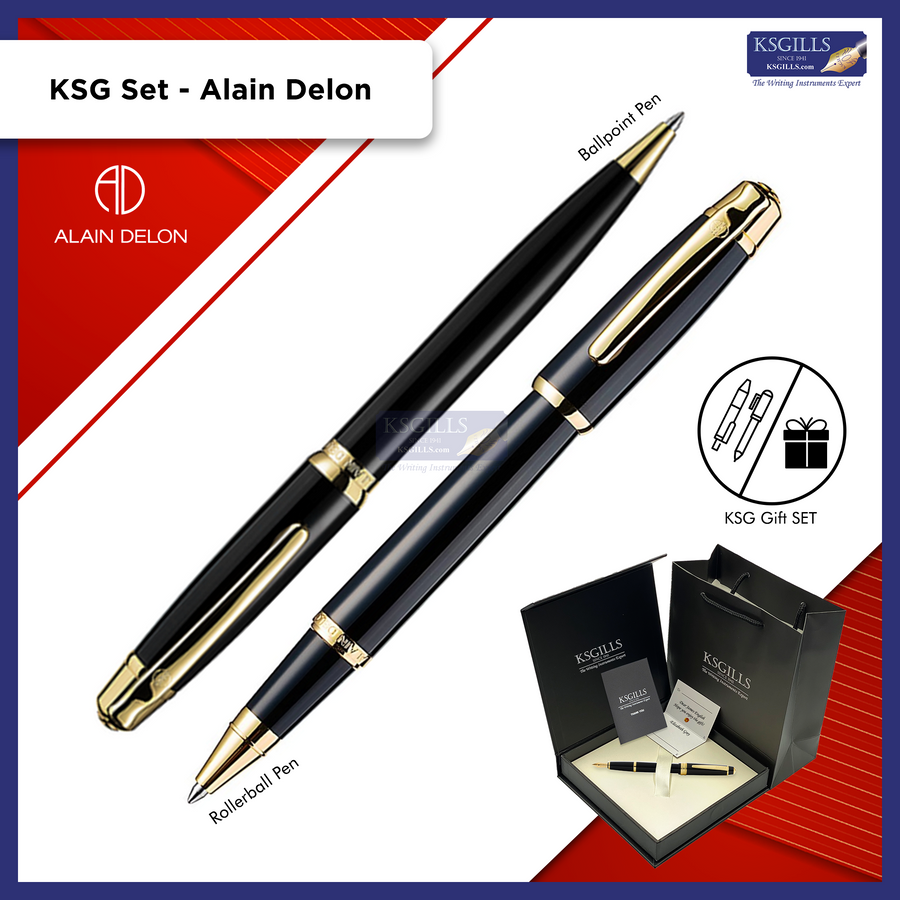
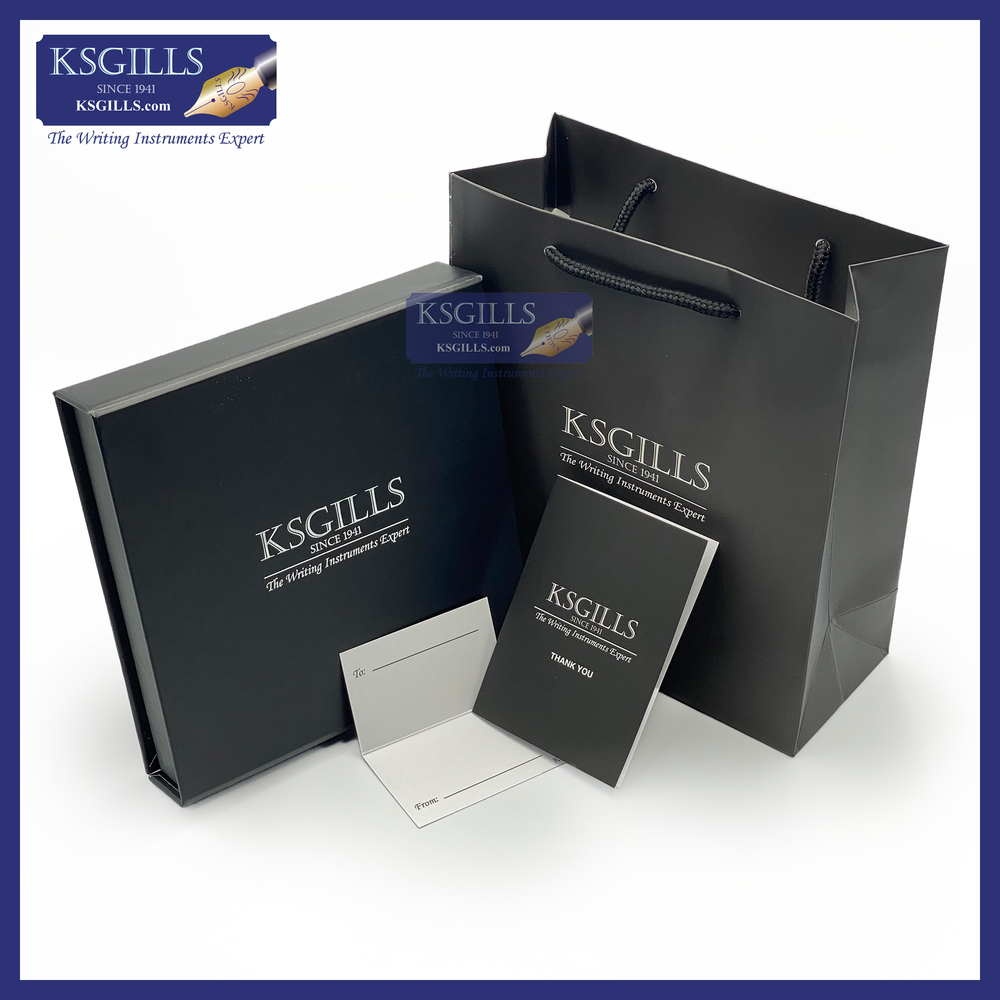

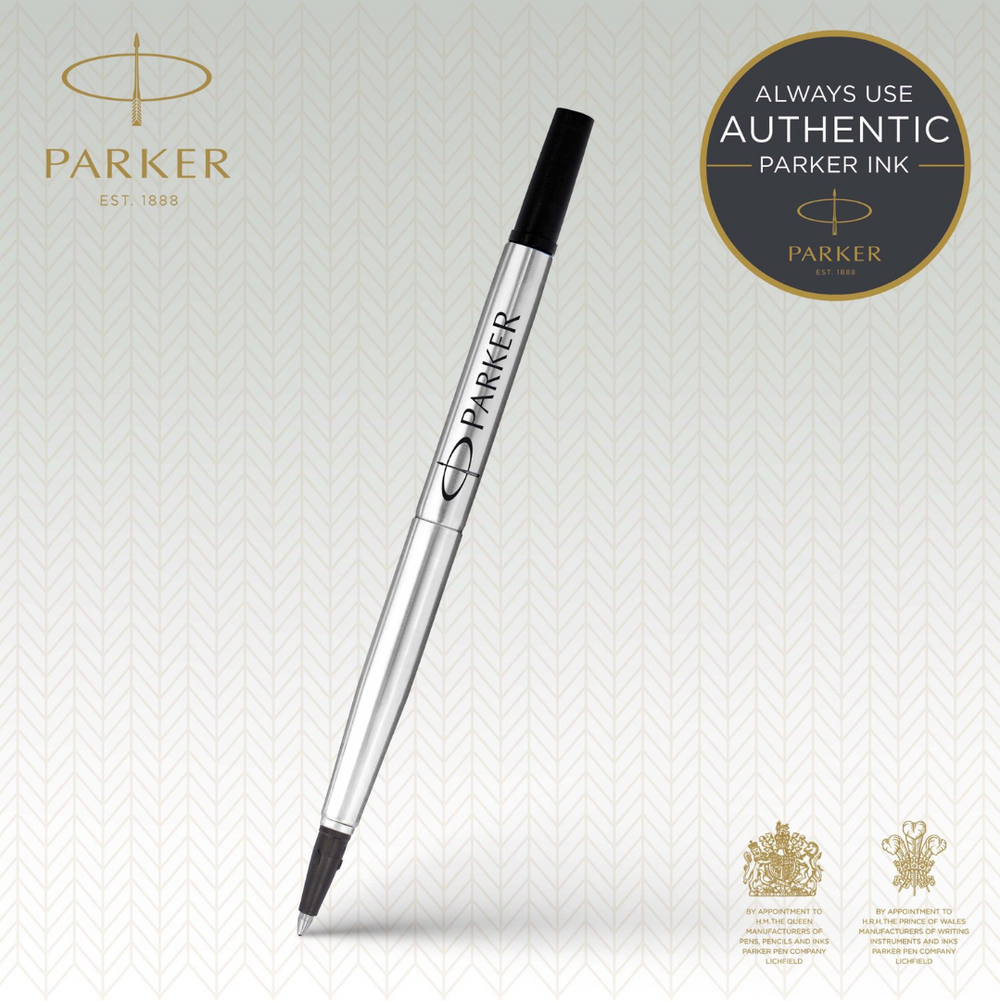
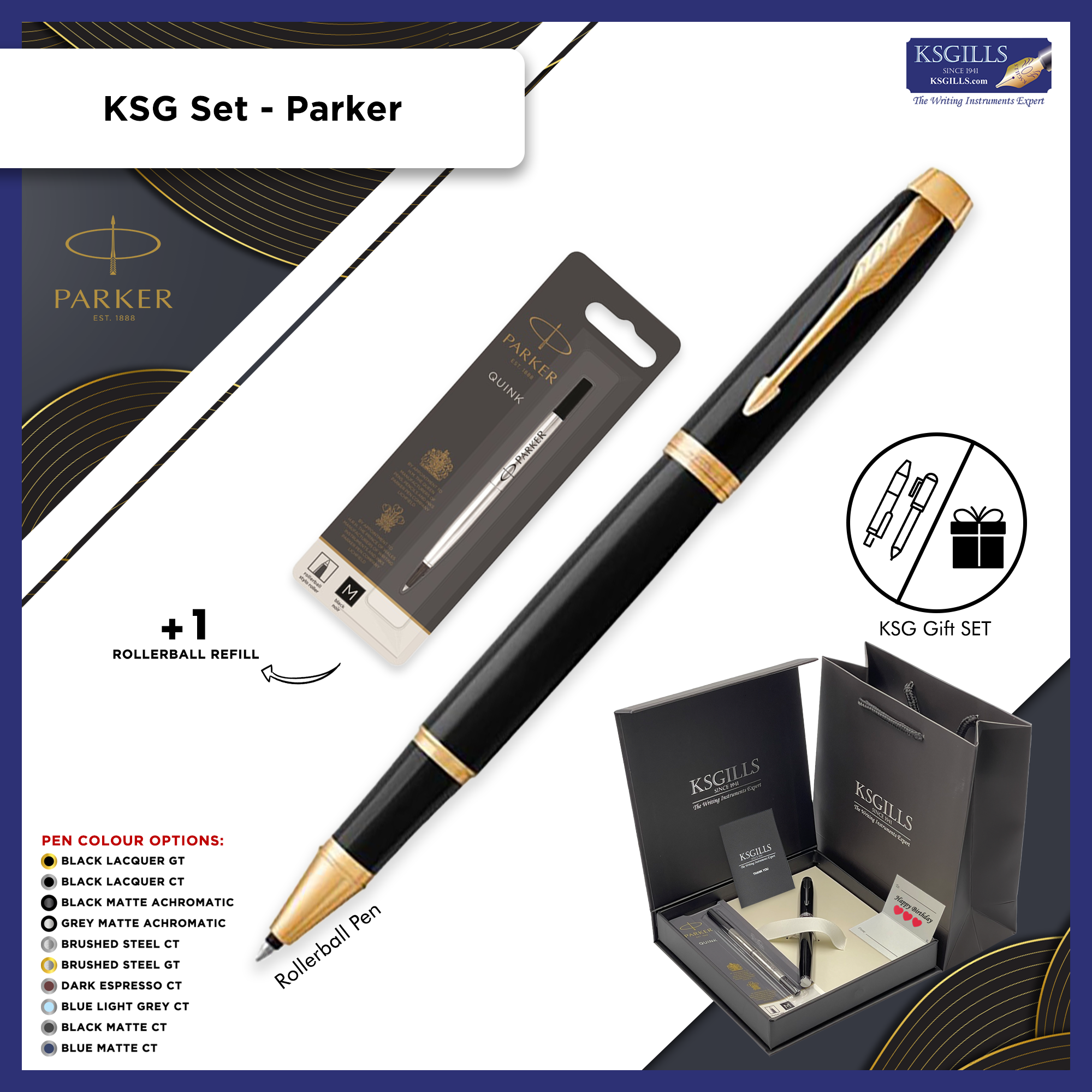

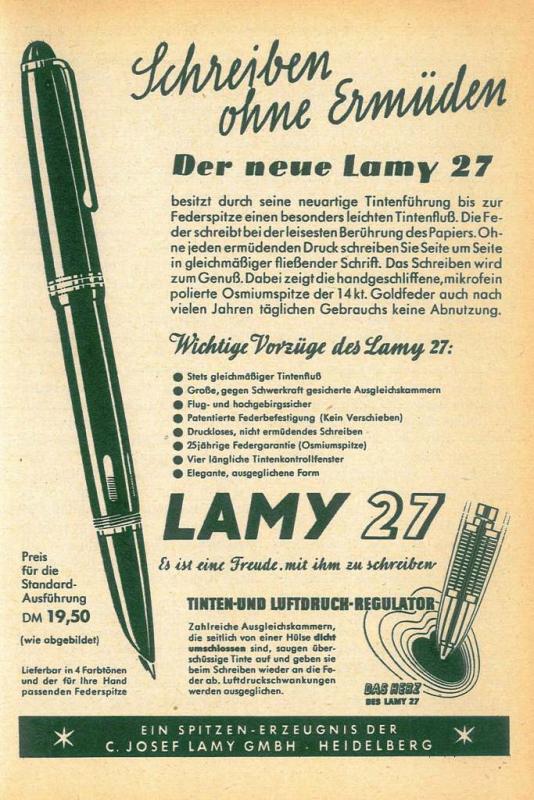
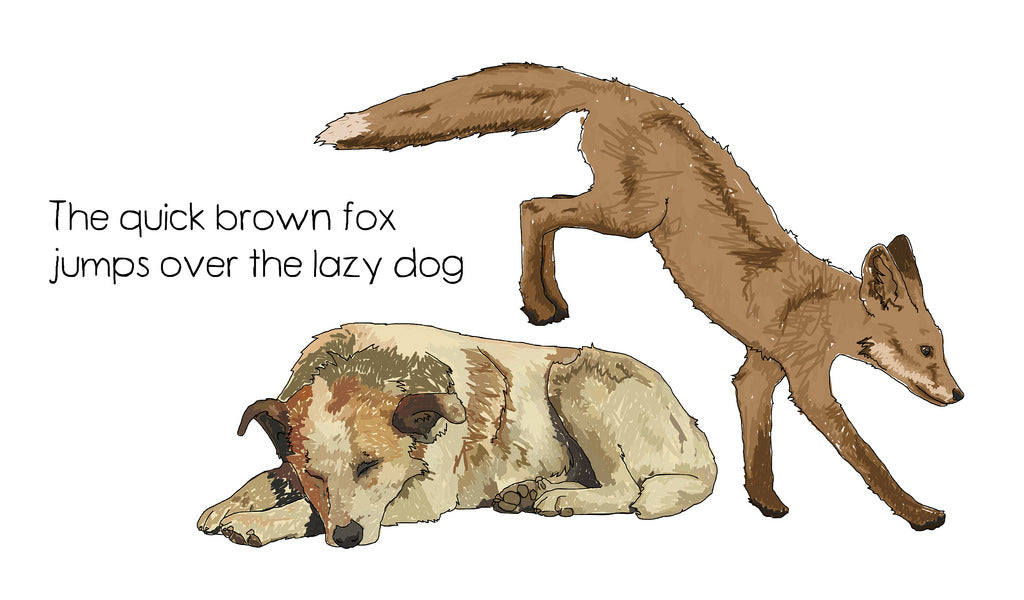
![KSG set - Double Pen SET - Parker IM Fountain & Ballpoint Pen - [Various Colours] - KSGILLS.com | The Writing Instruments Expert](http://ksgills.com/cdn/shop/products/THUMBAIL_KSGGiftSet-ParkerIM-BlackGold-FP_BP-Main.png?v=1659158551&width=900)
![KSG set - Double Pen SET - Parker IM Fountain & Ballpoint Pen - [Various Colours] - KSGILLS.com | The Writing Instruments Expert](http://ksgills.com/cdn/shop/products/BlackGold.png?v=1693741987&width=1000)
Leave a comment